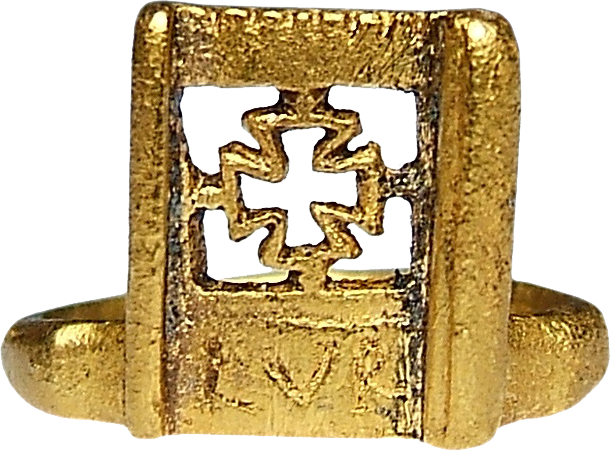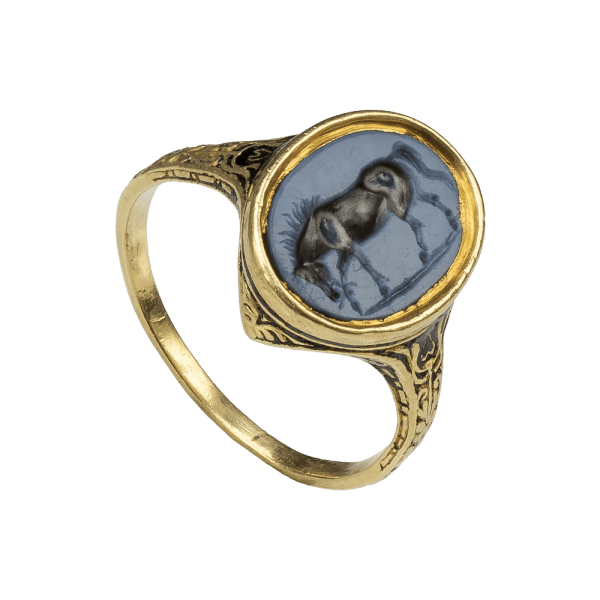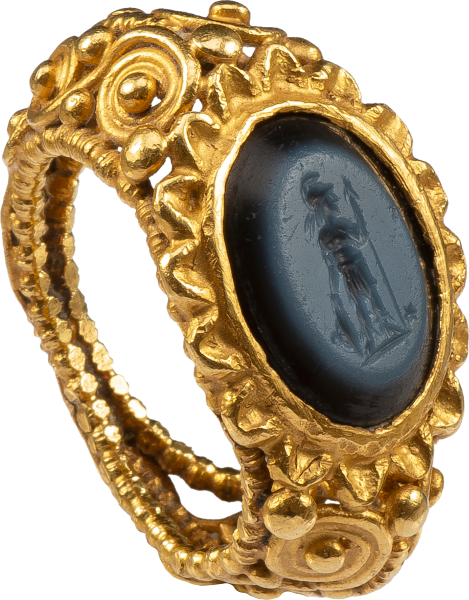


Late Roman Ring
, Roman Empire, 4th century

Late Roman Ring
Description
Inspired by functional bronze key rings common in the Empire, the design of this gold Roman ring is purely decorative, unusually incorporating Christian iconography and engraved letters, perhaps the initials of the 4th century owner.
Key-type projecting bezel engraved with an “ajouré” Greek cross crowning a flat band and inscribed with the letters LVR; the bezel is bordered on each side by a projecting circular band, thin on the left side, thicker on the right side (right side repaired); the top of the bezel is crenellated; irregular round shank slightly concave where it joins the bezel; in good condition.
Literature
For comparisons, see Sarajevo, National Museum of Bosnia-Herzegovina (identical type of ring showing Jupiter and an emperor, found in Yugoslavia; published in Ward, 1981, no. 68); and Trier, Rheinisches Landesmuseum, G.1261 (inscribed key-ring with two animals fighting; published in Yeroulanou, 1999, no. 335).
Rings with these peculiar projecting bezels were inspired by key rings, in use from the first century A.D. up to the early medieval period. In this example, the key shape is clearly evoked by the general shape of the bezel as well as by the crenellated top; however, the initials and ornamental cross have replaced any practical function (key rings were thought to be related to engagement and marriage and used to open wedding caskets). Most extant examples of projecting bezel rings present scenes of classicizing content. This type of ring was found anywhere in the late Roman Empire primarily from the second to the fourth century. What makes the present example unusually rare is the combination of the projecting key-type bezel with a Christian iconography and the inclusion of personalizing elements such as the initials.

